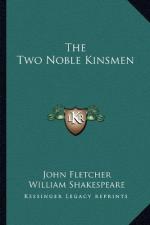|
This section contains 11,003 words (approx. 37 pages at 300 words per page) |

|
SOURCE: "Emilia's Argument: Friendship and 'Human Title' in The Two Noble Kinsmen;' in ELH, Vol. 64, No. 3, Fall, 1997, pp. 657-82.
In the following essay, Shannon examines the character of Emilia and claims that she "revises the definitional prejudices of the male model regarding both gender and sexuality. "
The masculinity of ideal friendship in the Renaissance is as proverbial as the "one soul in two bodies" formulation that celebrates it. Extending Cicero's disqualification of women from ideal friendship in De Amicitia, Montaigne's influential essay "De l'amitié" argued that women's minds were "not strong enough to endure the pulling of a knot so hard, so fast, so durable" as that composing a friendship based on (masculine) virtue.1 Writers throughout the Renaissance commonly employed the classical trope of a virtuous friendship between male equals as a counterpoint to the conditions of engagement with a political tyrant. In gender terms, the manly...
|
This section contains 11,003 words (approx. 37 pages at 300 words per page) |

|


